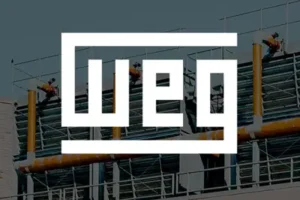
Heresite, a leader in the development of thin film corrosion resistant coatings, recently completed a UV-C exposure test on its P-413 coating, both with and without a topcoat. The test was conducted in conjunction with Sanuvox Technologies laboratory.
UV-C lights are used in many HVAC systems to sterilize HVAC coils and recirculated air. UV-C sterilization can improve indoor air quality, energy efficiency, and the health of the people who live or work in buildings by destroying contaminants such as mold, viruses, and bacteria. It therefore prevents the growth of biofilm on the coil fins that causes an increase of pressure drop and a reduction of heat transfer efficiency of the coil.
Unfortunately, UV-C light is also known for its detrimental effects on some plastics and synthetic polymers. UV-C light has no effect on metals such as copper and aluminum materials used to make HVAC coils but it cannot prevent the corrosive effect of a harsh coastal marine environment. Only an adequate coating can protect the HVAC coil metal from corrosion attack. However, the effects of the UV-C light can possibly break down the coating. While Heresite’s P-413 has a proven ability to protect HVAC coils from harsh marine environment, it was necessary to conduct UV-C endurance testing to understand P-413’s ability to protect HVAC-R coils in the presence of UV-C light.
The UV-C endurance test included two sets of panels. One panel set was coated with P-413. The second panel set was coated with P-413 and UC-5509. Panels were measured for initial gloss and dry film thickness, then sent to Sanuvox Technologies, where they were placed 12 inches from a 50-inch UV-C lamp. After 1,500 hours of exposure, the panels were returned to Heresite for evaluation.
The results of the test demonstrated that both the P-413 and P-413 + UC-5509 panels maintained their protective integrity after UV-C exposure. Although both panel sets experienced some fading, neither system had a loss of adhesion or change in flexibility.
Detailed test results – 1,500 hours of UV-C exposure
| P-413 | P-413 + UC-5500 |
| Some chalking did occur | Fading, no chalking apparent |
| Gloss: Faded/gloss diminished | Gloss: Faded/gloss diminished |
| Adhesion: 5B | Adhesion: 5B |
| Flexibility: Passes ¼” mandrel bend | Flexibility: Passes ½” mandrel bend |
“In highly corrosive conditions where air quality matters, P-413 or P-413 plus a UC-5509 topcoat is an ideal choice,” stated Peter Hellman, General Manager for Heresite Protective Coatings. “The need to protect HVAC equipment against harsh environmental conditions, such as marine environments, does not mean that it is necessary to sacrifice clean air. Heresite coatings which have a proven ability to withstand marine environmental corrosive attack, and have now successfully passed UV-C light resistance test.”
When P-413 was developed, Heresite chemists worked to ensure it could provide superior protection in heavily corrosive environments. P-413 has been extensively tested to demonstrate its effectiveness in a variety of environments. In addition to the positive results of this UV-C test, P-413 is the first and only HVAC-R coil and radiator coating to meet the ISO 20340 Standard for severe offshore marine environments.
Established in 1935, Heresite Protective Coatings has spent more than 80 years developing and perfecting protective coatings that solve corrosion problems in a variety of applications including commercial heating, cooling, refrigeration or other industrial process coils, as well as components that are regularly exposed to corrosive conditions, including coastal and marine environments. The company’s ongoing focus on technology leadership, rigorous quality and process control, and customer satisfaction has led to the development of multiple industry-leading coatings based on phenolic, epoxy phenolic, urethane and silicone chemistries. Heresite coatings not only provide protection in corrosive high salinity marine conditions, but industrial applications such as wastewater treatment, swimming pools, food processing, mining, oil and gas, semi-conductor production, pulp and paper, textile factories and other environments where these systems are exposed to chemical fumes.